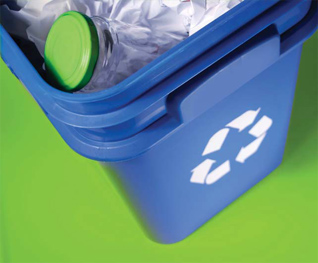I admit it. I’m tired of being lectured to about green building and sustainability. I’m not tired of the concepts; I like to think that I have subscribed to and enacted sustainable practices in my life and work for many years. I’m tired of green being the color of the month, and having to sit through holier-than-thou presentations from people who are climbing on the sustainability wagon to make a buck.
If this is what it takes to get more of us doing the right thing, maybe I shouldn’t be complaining. But fashions come and go. If green building is a fashion trend, rather than a core value, it is likely to be discarded as abruptly as it was taken up.
If being a good steward of the planet is something for which you can’t find motivation in your value system, you can certainly find it in the budget. It’s easy enough to make a compelling case for green practices without resorting to any posturing or judgmental statements.
At one presentation I recently attended during a design conference, the speaker had two great case studies. They showed that sustainable buildings cost a few percent more to build, but the savings in operations costs will pay for the upgrade in sustainability. In most cases, the upgrade pays for itself in less than eight years and in some cases, in less than three years, depending on variables such as energy costs and interest rates. After making this simple, elegant point, the speaker then began emitting unnecessary rhetoric. It rose off him like methane from a landfill. The nicest thing I can say about his rhetoric is that it was polarizing.

As a guy who grew up in northern Michigan, where recycling, composting, and conservation of resources were an integral part of daily life, I admit I’m incredulous that people might not recognize what the right thing is in terms of sustainable practices and responsible disposal of waste.
A few months ago I responded satirically to a listserv posting about “e-waste in the AV industry” that was discussing how to get rid of old products. Inspired by Arlo Guthrie’s “Alice’s Restaurant” and in my best sarcastic style, I penned the following: “We deal with e-waste the same way we deal with other trash. Take it out to the burn barrel, pour some gas or used motor oil over it, light it on fire, and enjoy the fumes. When the barrel is full of ashes we take the barrel down to the roadside dump next to the other trash pile in the city creek. After all, one big pile is better that two small piles. Makes for some good fish’n in the spring... I have some 8x10 photos if anybody wants copies.”
For the record, I do not advocate anyone dumping toxic waste in our water supply. And maybe these things aren’t as obvious as I think they are, which is why they keep coming up in presentations and listservs. If that is the case, what is needed is education, not pontification. Because it is extremely important that sustainability and building green not be a passing fad.
Working on a project with my father back in Michigan recently, we could have spent an hour sorting through his nuts-and-bolts jars for the two items we needed. Instead, we went to the big box lumberyard and bought them new. On this visit, time was limited. But someday those nuts-and-bolts jars will be mine, and I will add them to my own personal accumulation, which rivals his, collected from numerous construction and remodeling projects. In the spirit of “Alice’s Restaurant,” one big pile is better than two small piles. Sustainability is good, and it’s also good business. Do it for that reason, not as a fashionable way to pose. Because I have yet to hear of a way to safely dispose of all that excess toxic rhetoric.
Steven J. Thorburn (SJT@TA-Inc.com), PE, LEED-AP, CTS-D, CTS-I is cofounder of Thorburn Associates, a technology system and acoustic design and engineering firm with offices in Northern and Southern California and North Carolina. He is also a member of the steering committee of ICIA’s PETC (Professional Education and Training Committee), and is president of the Themed Entertainment Association (TEA).
